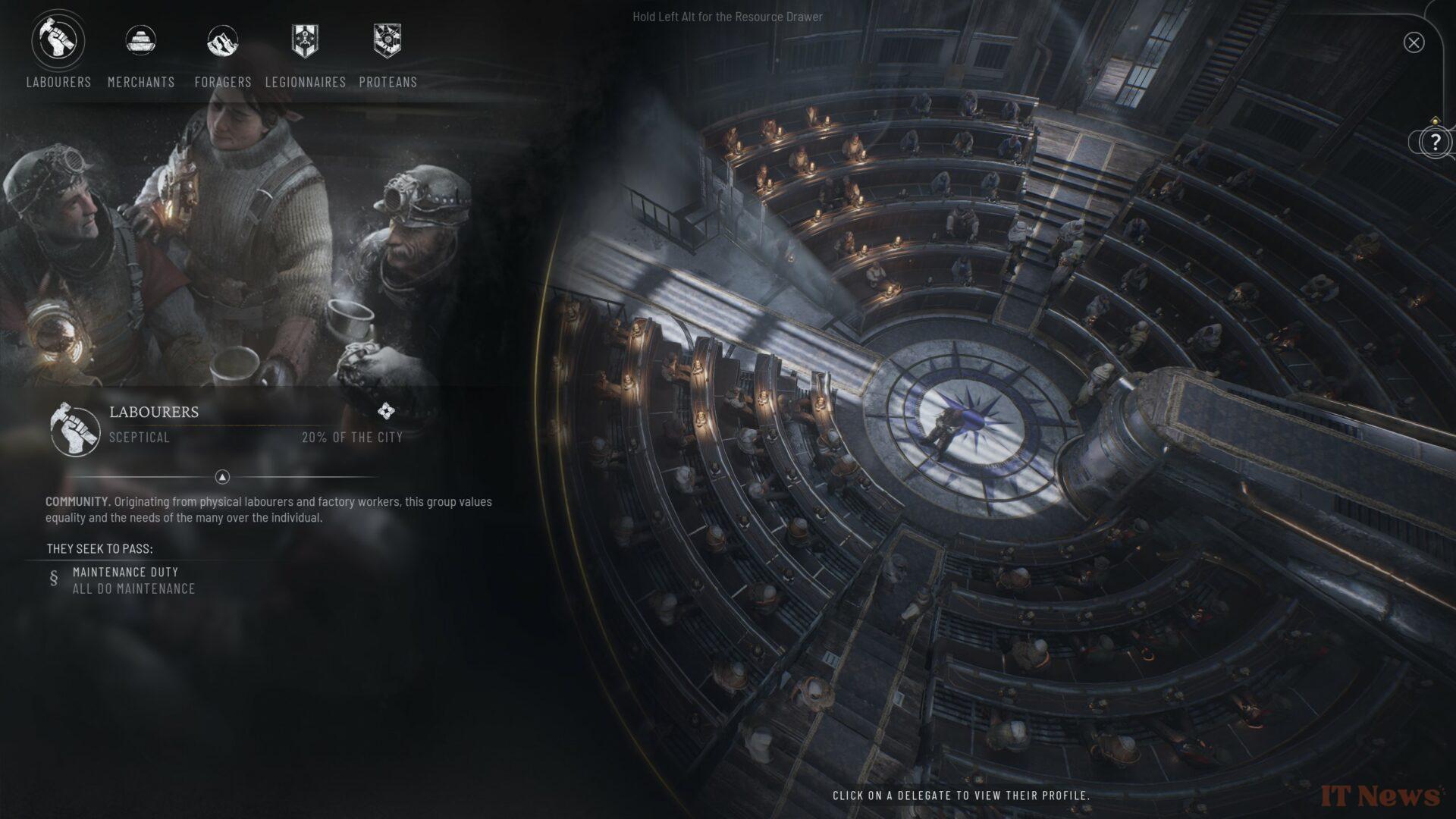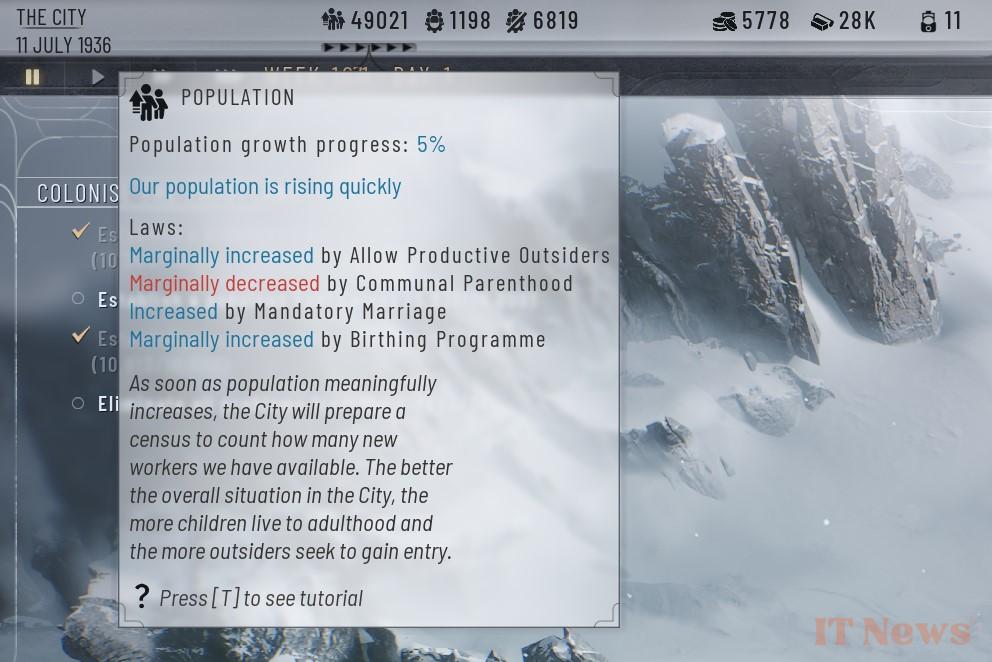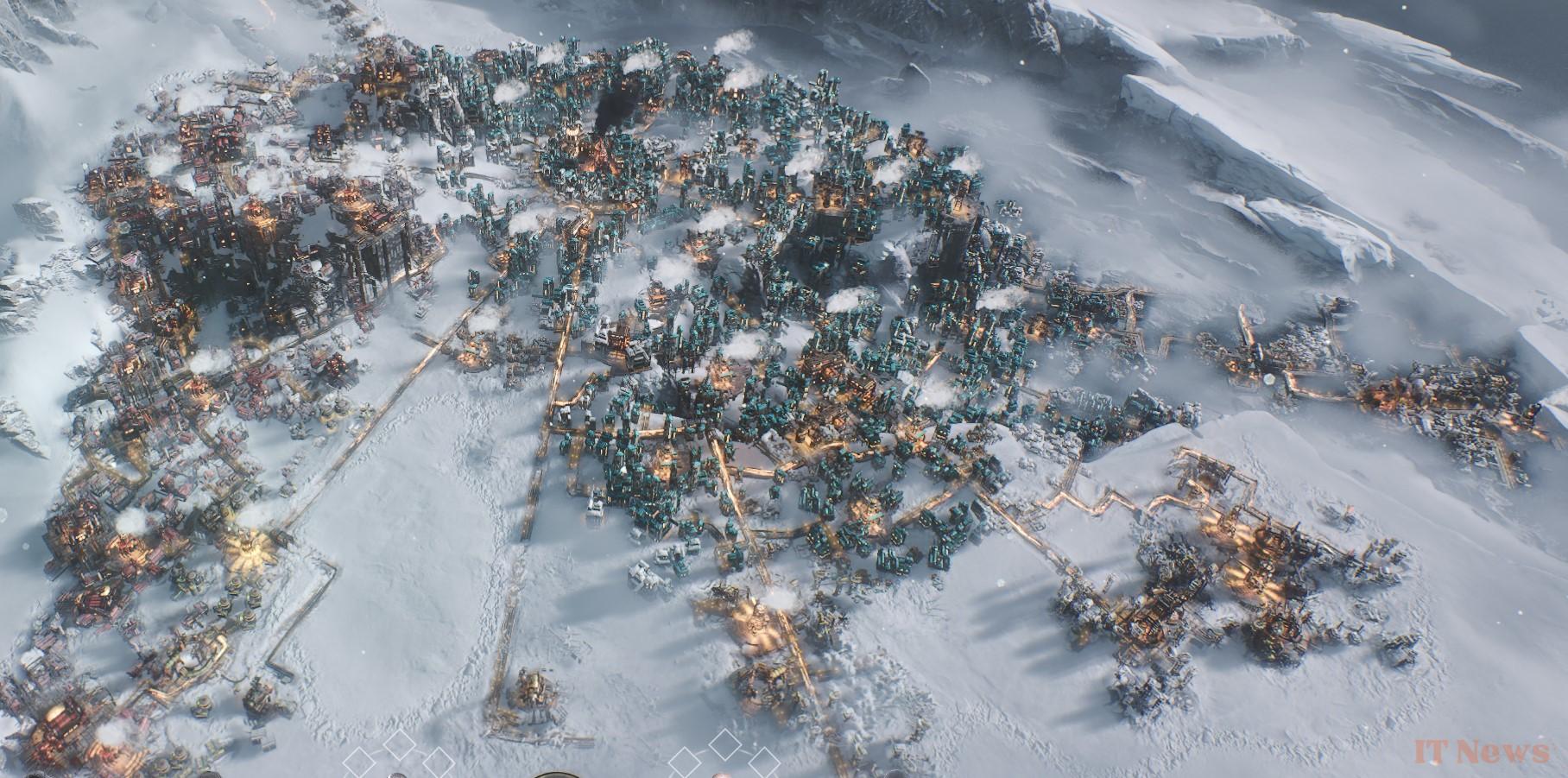When a successful video game gets a sequel, developers often tend to focus on continuity, so as not to shock long-time fans too much. But not 11-bit, the Polish studio behind the excellent Frostpunk, which decided to offer a drastic, particularly audacious mutation to its acclaimed title. Here is our hot take, after a few already very exciting gaming sessions.
The plot of Frospunk 2 takes place in the same environment as the first opus — a post-apocalyptic Earth, frozen in a merciless ice age where the few humans still alive can barely stand on their frostbitten feet. The first difference lies in the temporality: the plot takes place a few years after the events of the first opus, at a time when the survivors have had time to find their bearings in this frozen hell. Now, the time for pure survival is over: what remains of humanity has begun to dream of expansion, exploration, and prosperity. But while all citizens are determined to move forward, the unifying survival instinct of the early days has dissipated, and society has fractured into different factions, each with very different visions of humanity’s future.
Abstraction versus immersion
This is a major difference whose impact extends far beyond the narrative; Frospunk 2’s gameplay has been largely rethought and refocused around the population, its aspirations, and its disillusionments. The goal is no longer simply to accumulate resources to survive the next cold snap. You also need to make sure that each branch of the population will recognize itself in this new society that you are building — a political dimension that deeply affects the identity of the game.
In practice, this is mainly manifested by a rise in scale and a certain step back at all levels. Frospunk 1 is dominated by a kind of intimacy that greatly promotes immersion; the small population of the original colony, constantly one step away from extinction, means that each soul has its role to play. Each individual death can deeply affect the game, and the player therefore has every interest in preserving his citizens at all costs. Now, the population of this meager colony that has become a city in its own right is significantly larger than before, and that changes everything; this intimate dimension that contributes greatly to the impact of the game is much more in the background in the second opus.
The key word here is abstraction. More than individuals, the inhabitants are now numbers, statistics. Citizens are born and die by the thousands, and the population is a resource in its own right, just like coal or food. With a little hindsight, we realize that losing hundreds of people at once is now part of the colony's routine. Losing people is no longer a tragedy; it is an inevitable consequence of the group’s growth and survival.
There’s something deeply atrocious about this observation. One could argue that this depersonalization of the colonists contributes to the existential horror that is at the heart of the franchise. But there’s no denying that Frospunk 2 sacrifices some of the visceral fatalism that was so tasty in its predecessor; it’s harder to identify with the suffering of the citizens. Many players may feel that this new formula lacks a little extra soul. This feeling is further reinforced by a purely visual change; we no longer see each individual settler killing himself to regain a few meters of land on the merciless frozen wasteland, and everything is done by numbers and letters on an interface.
The City before the citizens
In essence, Frostpunk 2 is a game much more focused on the city itself than on its inhabitants — a rather disconcerting choice for fans of the original, especially since it is slightly undermined by a radical change in the way the territory is developed. Now, all the planning and construction of the City goes through Civilization-style tiles. We no longer build individual buildings that will be visible on the map, but entire districts that are all neatly arranged on a predefined grid, which undoubtedly removes a part of creative expression. Here again, this reinforces this abstract side that risks being quite divisive among some early fans.
Others, on the other hand, may see it as a sort of perpetual mise en abyme. This interpretation is further reinforced by the importance of politics, which plays a decisive role in Frospunk 2. A large part of the gameplay is based on the Council, a sort of National Assembly through which the player must pass different laws to manage the City. By shaping the identity of his miniature society through decisions such as opening up to foreigners, the legality of alcohol, the remuneration of workers or the way to exploit certain critical resources, the player directly traces the path followed by the members of the colony — but always with a certain distance that did not really exist in the first opus.
A rather paradoxical point, because in fact, all these decisions have an extremely concrete impact on the course of the game. Renounce to honor a promise made to a faction, such as the Technocrats, the Workers or the Thinkers, and you risk an uprising and strikes that can paralyze your entire colony. For example, during our first game, the adventure came to a sudden halt when the Technocrats, angered by a seemingly trivial decision on the use of robots, decided to go on strike in the district assigned to coal production, where they were dominant. The problem? Their whims fell in the middle of a storm that caused the temperature to plummet below 110°C, propelling the entire city into the grave with them!
The other major difference lies in the management of the Frostlands, the frozen expanses surrounding the city. It is now vital to allocate time and resources to exploring and exploiting these resources, particularly through the founding of new outposts to serve the colony. This is another blatant example of the game's scaling up; it contrasts massively with the intimate side of the first opus, where the city was much more withdrawn into itself. But at the same time, it adds a layer of complexity that is quite enjoyable when you play the game.
More than just a successor
For our part, even if we were initially taken aback by this radically different approach to the dystopian colony-sim, we nevertheless had a lot of fun juggling with these new elements. Even if the new formula will definitely not be unanimous among fans of the original Frostpunk, juggling with additional constraints remains very interesting, especially in the higher difficulty levels that constantly require making very difficult decisions for the future of the group.
Because in the end, both opuses remain based on the same precept: do the best with resources that are always insufficient to ensure the survival of these poor souls put to the test by nature. And the experience remains quite enjoyable, even if we can't help but regret the impact of this generalized abstraction on immersion.






0 Comments